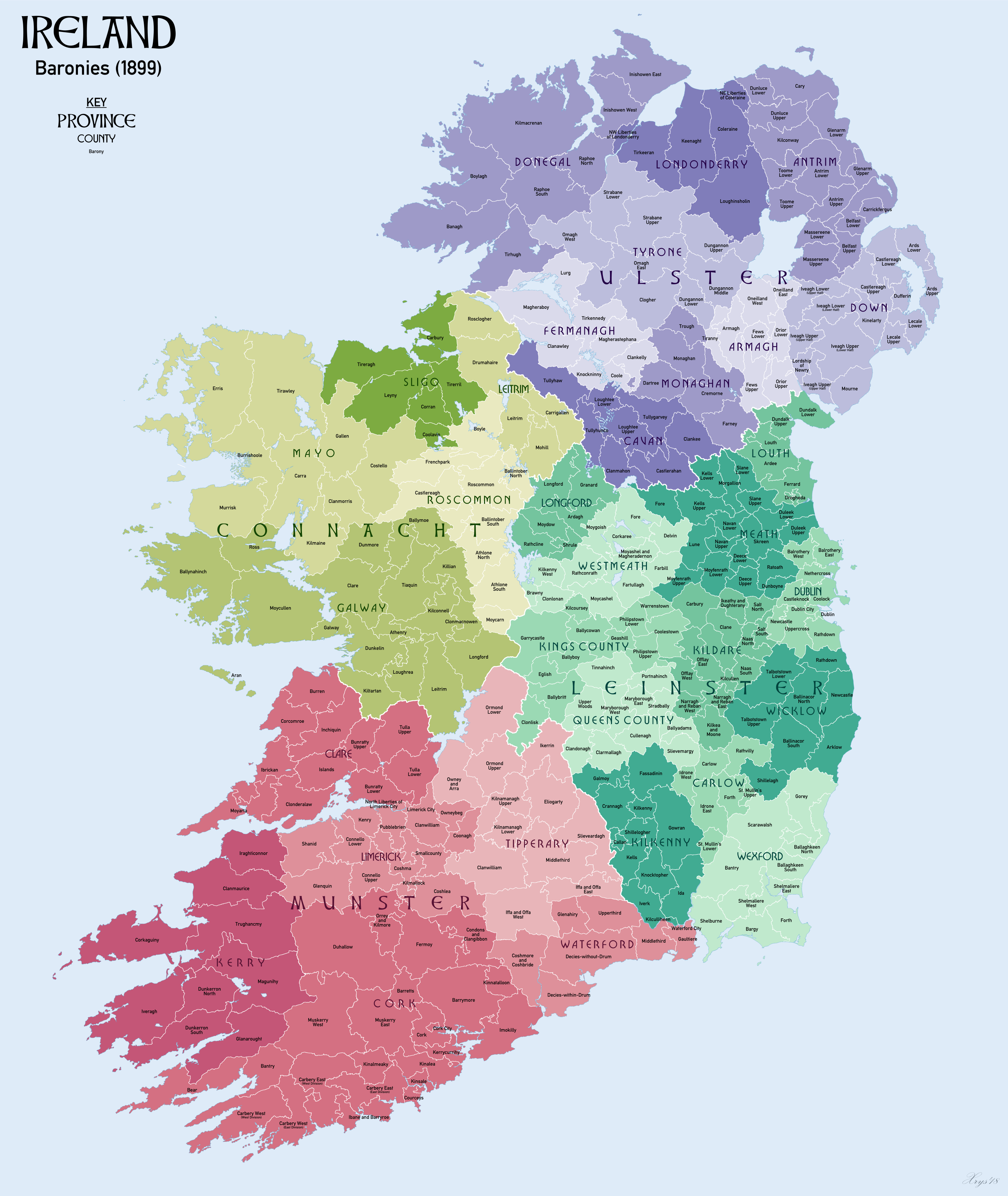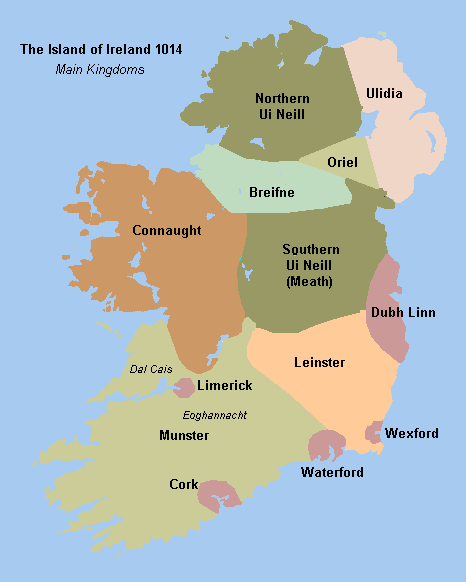|
Corran (barony)
Corran (''An Corán'') is a historic barony in south County Sligo in Ireland. It corresponds to the ancient túath of Corann. The barony is centred broadly about the town of Ballymote. To the north and east lies the barony of Tirerril, to the east the barony of Leyny, and to the south the Barony of Coolavin. There is also a border to the south east with the barony of Boyle and to the south west with the Barony of Costello. Francis Taaffe, 3rd Earl of Carlingford and 4th Viscount Taaffe of Corran was born in Ballymote in 1639. References Baronies of County Sligo {{Sligo-geo-stub ... [...More Info...] [...Related Items...] OR: [Wikipedia] [Google] [Baidu] |
Irish Language
Irish (Standard Irish: ), also known as Irish Gaelic or simply Gaelic ( ), is a Celtic language of the Indo-European language family. It is a member of the Goidelic languages of the Insular Celtic sub branch of the family and is indigenous language, indigenous to the island of Ireland. It was the majority of the population's first language until the 19th century, when English (language), English gradually became dominant, particularly in the last decades of the century, in what is sometimes characterised as a result of linguistic imperialism. Today, Irish is still commonly spoken as a first language in Ireland's Gaeltacht regions, in which 2% of Ireland's population lived in 2022. The total number of people (aged 3 and over) in Ireland who declared they could speak Irish in April 2022 was 1,873,997, representing 40% of respondents, but of these, 472,887 said they never spoke it and a further 551,993 said they only spoke it within the education system. Linguistic analyses o ... [...More Info...] [...Related Items...] OR: [Wikipedia] [Google] [Baidu] |
Barony (Ireland)
In Ireland, a barony (, plural ) is a historical subdivision of a counties of Ireland, county, analogous to the hundred (county subdivision), hundreds into which the counties of England were divided. Baronies were created during the Tudor reconquest of Ireland, replacing the earlier cantreds formed after the original Norman invasion of Ireland, Norman invasion.Mac Cotter 2005, pp.327–330 Some early baronies were later subdivided into half baronies with the same standing as full baronies. Baronies were mainly cadastre, cadastral rather than administrative units. They acquired modest local taxation and spending functions in the 19th century before being superseded by the Local Government (Ireland) Act 1898. Subsequent adjustments of county boundaries mean that some baronies now straddle two counties. The final catalogue of baronies numbered 331, with an average area of ; each county was divided, on average, into 10 or 11 baronies. Creation The island of Ireland was "shired" i ... [...More Info...] [...Related Items...] OR: [Wikipedia] [Google] [Baidu] |
List Of Sovereign States
The following is a list providing an overview of sovereign states around the world with information on their status and recognition of their sovereignty. The 205 listed states can be divided into three categories based on membership within the United Nations System: 193 member states of the United Nations, UN member states, two United Nations General Assembly observers#Current non-member observers, UN General Assembly non-member observer states, and ten other states. The ''sovereignty dispute'' column indicates states having undisputed sovereignty (188 states, of which there are 187 UN member states and one UN General Assembly non-member observer state), states having disputed sovereignty (15 states, of which there are six UN member states, one UN General Assembly non-member observer state, and eight de facto states), and states having a political status of the Cook Islands and Niue, special political status (two states, both in associated state, free association with New ... [...More Info...] [...Related Items...] OR: [Wikipedia] [Google] [Baidu] |
Republic Of Ireland
Ireland ( ), also known as the Republic of Ireland (), is a country in Northwestern Europe, north-western Europe consisting of 26 of the 32 Counties of Ireland, counties of the island of Ireland, with a population of about 5.4 million. Its capital city, capital and largest city is Dublin, on the eastern side of the island, with a population of over 1.5 million. The sovereign state shares its only land border with Northern Ireland, which is Countries of the United Kingdom, part of the United Kingdom. It is otherwise surrounded by the Atlantic Ocean, with the Celtic Sea to the south, St George's Channel to the south-east and the Irish Sea to the east. It is a Unitary state, unitary, parliamentary republic. The legislature, the , consists of a lower house, ; an upper house, ; and an elected President of Ireland, president () who serves as the largely ceremonial head of state, but with some important powers and duties. The head of government is the (prime minister, ), ... [...More Info...] [...Related Items...] OR: [Wikipedia] [Google] [Baidu] |
Provinces Of Ireland
There are four provinces of Ireland: Connacht, Leinster, Munster and Ulster. The Irish language, Irish word for this territorial division, , meaning "fifth part", suggests that there were once five, and at times Kingdom of Meath, Meath has been considered to be the fifth province. In the medieval period, however, there were often more than five. The number of provinces and their delimitation fluctuated until 1610, when they were permanently set by the English administration of James VI and I, James I. The provinces of Ireland no longer serve administrative or political purposes but function as historical and cultural entities. Etymology In modern Irish language, Irish, the word for province is (pl. ). The modern Irish term derives from the Old Irish (pl. ) which literally meant "a fifth". This term appears in 8th-century law texts such as and in the legendary tales of the Ulster Cycle where it refers to the five kingdoms of the "Pentarchy". MacNeill enumerates the five earl ... [...More Info...] [...Related Items...] OR: [Wikipedia] [Google] [Baidu] |
Connacht
Connacht or Connaught ( ; or ), is the smallest of the four provinces of Ireland, situated in the west of Ireland. Until the ninth century it consisted of several independent major Gaelic kingdoms (Uí Fiachrach, Uí Briúin, Uí Maine, Conmhaícne, and Delbhna). Between the reigns of Conchobar mac Taidg Mór (died 882) and his descendant, Aedh mac Ruaidri Ó Conchobair (reigned 1228–33), it became a kingdom under the rule of the Uí Briúin Aí dynasty, whose ruling sept adopted the surname Ua Conchobair. At its greatest extent, it incorporated the often independent Kingdom of Breifne, as well as vassalage from the lordships of western Mide and west Leinster. Two of its greatest kings, Tairrdelbach Ua Conchobair (1088–1156) and his son Ruaidri Ua Conchobair (c. 1115–1198) greatly expanded the kingdom's dominance, so much so that both became High King of Ireland. The Kingdom of Connacht collapsed in the 1230s because of civil war within the royal dynasty, which enab ... [...More Info...] [...Related Items...] OR: [Wikipedia] [Google] [Baidu] |
Counties Of Ireland
The counties of Ireland (Irish language, Irish: ) are historic administrative divisions of the island. They began as Normans in Ireland, Norman structures, and as the powers exercised by the Cambro-Norman barons and the Old English (Ireland), Old English nobility waned over time, new offices of political control came to be established at a county level. The number of counties varied depending on the time period, however thirty-two is the traditionally accepted and used number. Upon the partition of Ireland in 1921, six of the traditional counties became part of Northern Ireland. In Northern Ireland, Counties of Northern Ireland, counties ceased to be used for local government in 1973; Local government in Northern Ireland, districts are instead used. In the Republic of Ireland, some counties have been split resulting in the creation of new counties: there are currently 26 counties, 3 cities and 2 cities and counties that demarcate areas of local government in the Republic of Ire ... [...More Info...] [...Related Items...] OR: [Wikipedia] [Google] [Baidu] |
County Sligo
County Sligo ( , ) is a Counties of Ireland, county in Republic of Ireland, Ireland. It is in the Northern and Western Region and is part of the Provinces of Ireland, province of Connacht. Sligo is the administrative capital and largest town in the county. Sligo County Council is the Local government in the Republic of Ireland, local authority for the county. The population of the county was 70,198 at the 2022 census of Ireland, 2022 census. It is noted for Benbulben Mountain, one of Ireland's most distinctive natural landmarks. History The county was officially formed in 1585 by Sir Henry Sidney, Lord Deputy of Ireland, but did not come into effect until the chaos of the Nine Years' War (Ireland), Nine Years' War ended, in 1603. Its boundaries reflect the Ó Conchobhair Sligigh confederation of Lower Connacht () as it was at the time of the Elizabethan conquest. This confederation consisted of the tuatha, or territories, of Cairbre Drom Cliabh, Cairbre Drumcliabh, Tír Fhíacr ... [...More Info...] [...Related Items...] OR: [Wikipedia] [Google] [Baidu] |
Baronies Of Ireland
In Ireland, a barony (, plural ) is a historical subdivision of a county, analogous to the hundreds into which the counties of England were divided. Baronies were created during the Tudor reconquest of Ireland, replacing the earlier cantreds formed after the original Norman invasion.Mac Cotter 2005, pp.327–330 Some early baronies were later subdivided into half baronies with the same standing as full baronies. Baronies were mainly cadastral rather than administrative units. They acquired modest local taxation and spending functions in the 19th century before being superseded by the Local Government (Ireland) Act 1898. Subsequent adjustments of county boundaries mean that some baronies now straddle two counties. The final catalogue of baronies numbered 331, with an average area of ; each county was divided, on average, into 10 or 11 baronies. Creation The island of Ireland was "shired" into counties in two distinct periods: the east and south during the Anglo-Norman peri ... [...More Info...] [...Related Items...] OR: [Wikipedia] [Google] [Baidu] |
Túath
''Túath'' (plural ''túatha'') is the Old Irish term for the basic political and jurisdictional unit of Gaelic Ireland. ''Túath'' can refer to both a geographical territory as well the people who lived in that territory. The smallest ''túath'' controlled by a king was about the size of a later Irish barony (about 177sq miles) and kings with greater power would have two or more ''túatha'' under their control, according to ''A Smaller Social History of Ancient Ireland.'' '' Social structure In ancient Irish terms, a household was reckoned at about 30 people per dwelling. A ''trícha cét'' ("thirty hundreds"), was an area comprising 100 dwellings or, roughly, 3,000 people. A ''túath'' consisted of a number of allied ''trícha céta'', and therefore referred to no fewer than 6,000 people. Probably a more accurate number for a ''túath'' would be no fewer than 9,000 people. Each ''túath'' was a self-contained unit, with its own executive, assembly, courts system and defence ... [...More Info...] [...Related Items...] OR: [Wikipedia] [Google] [Baidu] |
Corann
Corann was an ancient Irish túath in northwest Connacht represented now by the present barony of Corran in County Sligo. The name is derived in legend from Corann, the harper of Dian Cecht of the Tuatha Dé Danann. Organisation Ballymote became the centre of the túath after construction of Ballymote Castle in the 13th century. History The well of Corann that alternated between sweet water and salt in time with the ebb and flow of the tide. It was first shired as part of the new County Sligo by the English Lord Deputy Sir Henry Sidney in 1564. References Medieval history of Ireland Historic Gaelic territories {{Sligo-geo-stub ... [...More Info...] [...Related Items...] OR: [Wikipedia] [Google] [Baidu] |
Ballymote
Ballymote () is a market town in southern County Sligo, Ireland. It is around 20 km south of Sligo town in the province of Connacht, which is in the north-west of Republic of Ireland, Ireland. Ballymote lies in the Barony (Ireland), barony of Corran (barony), Corran. It is a Commuting, commuter town with a strong history of independent enterprises along with firm local health, school, and transport services. Ballymote is on the main Dublin–Sligo railway line, Dublin to Sligo Train Line, and 10 minutes from the N4 road (Ireland), N4 / N17 road (Ireland), N17 roads. The town serves a large hinterland area in south east County Sligo. The Normans, Norman Ballymote Castle dates from the 1300s, and the Book of Ballymote was written in or near the town in the 1390s. History The origins of the settlement appear to have been derived from the 12th century Norman Castle, though evidence of earlier settlement and farming in area from 1000BC exists through the presence of ringforts, ... [...More Info...] [...Related Items...] OR: [Wikipedia] [Google] [Baidu] |





